
MADE BY HAND: WHEN NO-ONE CAN SEE THAT IT’S DENTAL TECHNOLOGY
Ioulianos Moustakis
Dental technology is the art of imitation to ensure that only patients know that their teeth are artificial and that they feel them to be their own. In this way, we earn our money and make everyone just that little bit happier: patients, dentists, and even ourselves to a degree. Recognition of this is motivation for our customers and ourselves. It does not simply drop from the sky, it is hard earned, sometimes only gained with great effort, between the clinic and the laboratory by placing mutual trust in the expertise of the other for the planning of treatments, the selected procedure, the materials used, and the treatment and fabrication procedures used.
THE FULL DENTURE OF TODAY
Removable restorations are no longer the bread and butter of dental technician’s business with combination work instead taking their place. These include cover dentures in the form of hybrid dentures. They are the modern, high-quality, periodontally or implant-supported full dentures of today. It is best in these cases to draw on planning aids that are either available in one’s head and hands or software or both. One example is Gerber model analysis. Its advantage lies in its ability to identify statically secure support areas so that the posterior teeth occlude within a narrow lingualized tunnel, to reliably support the hybrid denture, and to help prevent shear forces on implants.
Fig. 1: Hybrid dentures are the full dentures of today

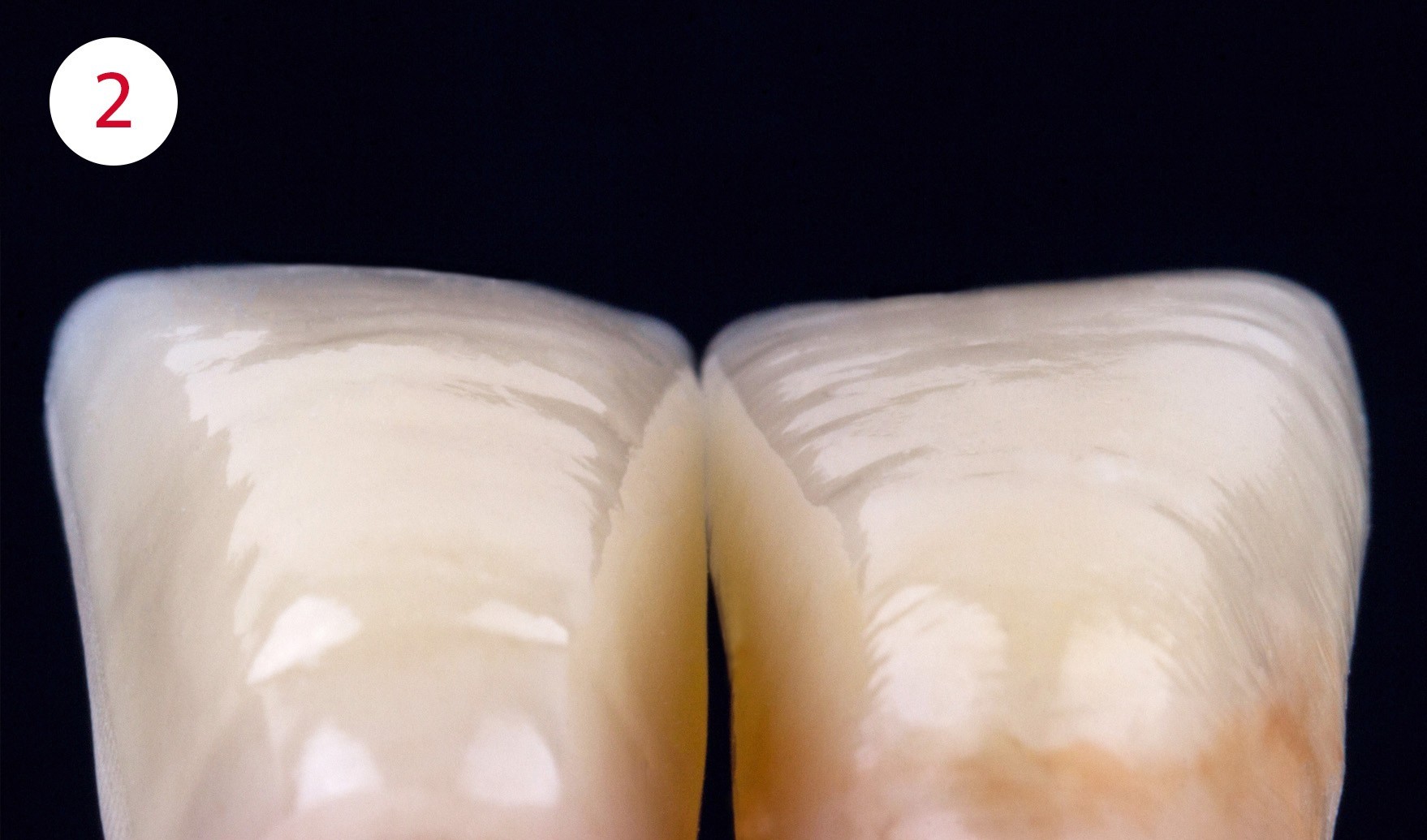
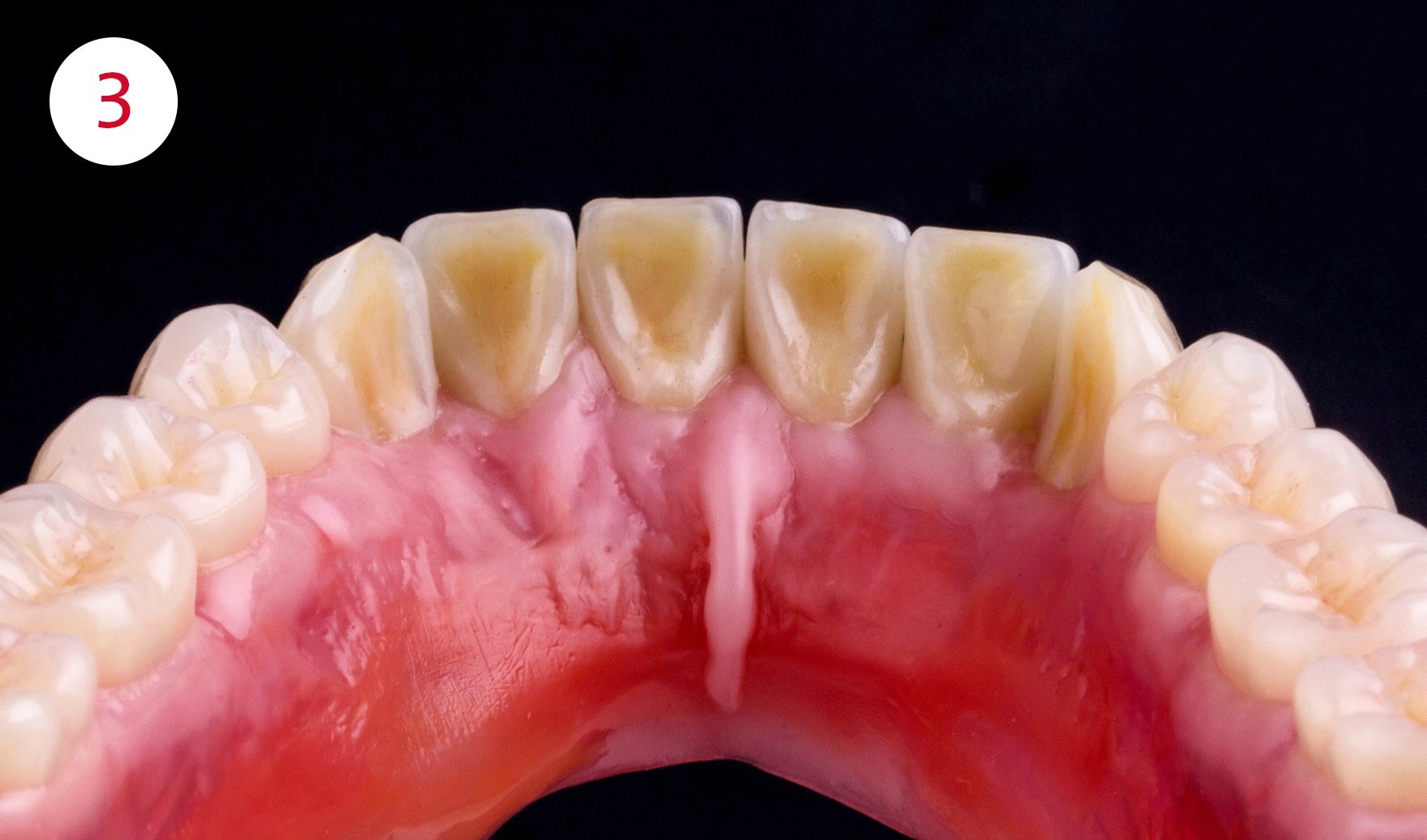
DECEPTIVELY REAL FOR THOSE AROUND THE PATIENT
It isn’t just dentists and dental technicians who look at people’s mouths and teeth. These days just about everyone does it and many are happy to confess to doing so. Whether patients can confidently enjoy this gaze with artificial anterior teeth reveals if dental manufacturers and the laboratory have done their job well or not. The anterior teeth act as a calling card for verbal and non-verbal communication not just for hybrid dentures but also for all other removable restorations. The more life-like and thus natural they appear, the more difficult it is (for laypersons and that is what’s important!) to identify the artificial.
If the laboratory has sufficient substance here to adapt the shape and foundation, the more effective is the deception, e.g., to camouflage combination dentures and hybrid dentures. If the shapes and size of the range also coordinate, the surface texture creates a life-like light refraction, and incisal translucence effects are imitated as is the case with PhysioStar NFC+, then based on my observations of patient reactions and those of the people around them, the perfect illusion has been created.
Fig. 2: For lips and mouth, naturally real…
Fig. 3: …also from the palatal view
OCCLUSION IS BEST LINGUALIZED, CREATING A SAFE PATH, JUST LIKE A MARBLE RUN
With the Condyloform II NFC+, static and dynamic contacts are present as tooth-to-tooth posterior tooth type within the periodontal or implant support area with eccentric contacts (also for balancing) being reduced. The forces are transferred via BC contacts towards the bone to implant interface. Harmful leverage and shear forces acting on abutment teeth or implants are minimized thanks to the Gerber concept. The working time is also a relevant factor for premium dentures. The rapidly created support based on the mortar and pestle principle provides additional assistance here. Static and dynamic support is provided around the lingually moving parts of the chewing surfaces with guidance based on the shape of joints. A contacts and their destabilizing effects are minimized by buccal wear cusps with suffi cient volume to support the cheeks in the upper jaw. In a word: antagonists move on secure tracks just like a marble run. This is a contemporary approach and also boosts the longevity of the restoration, particular if implants are used.
Fig. 4: Tooth-to-tooth for autonomous occlusal stability
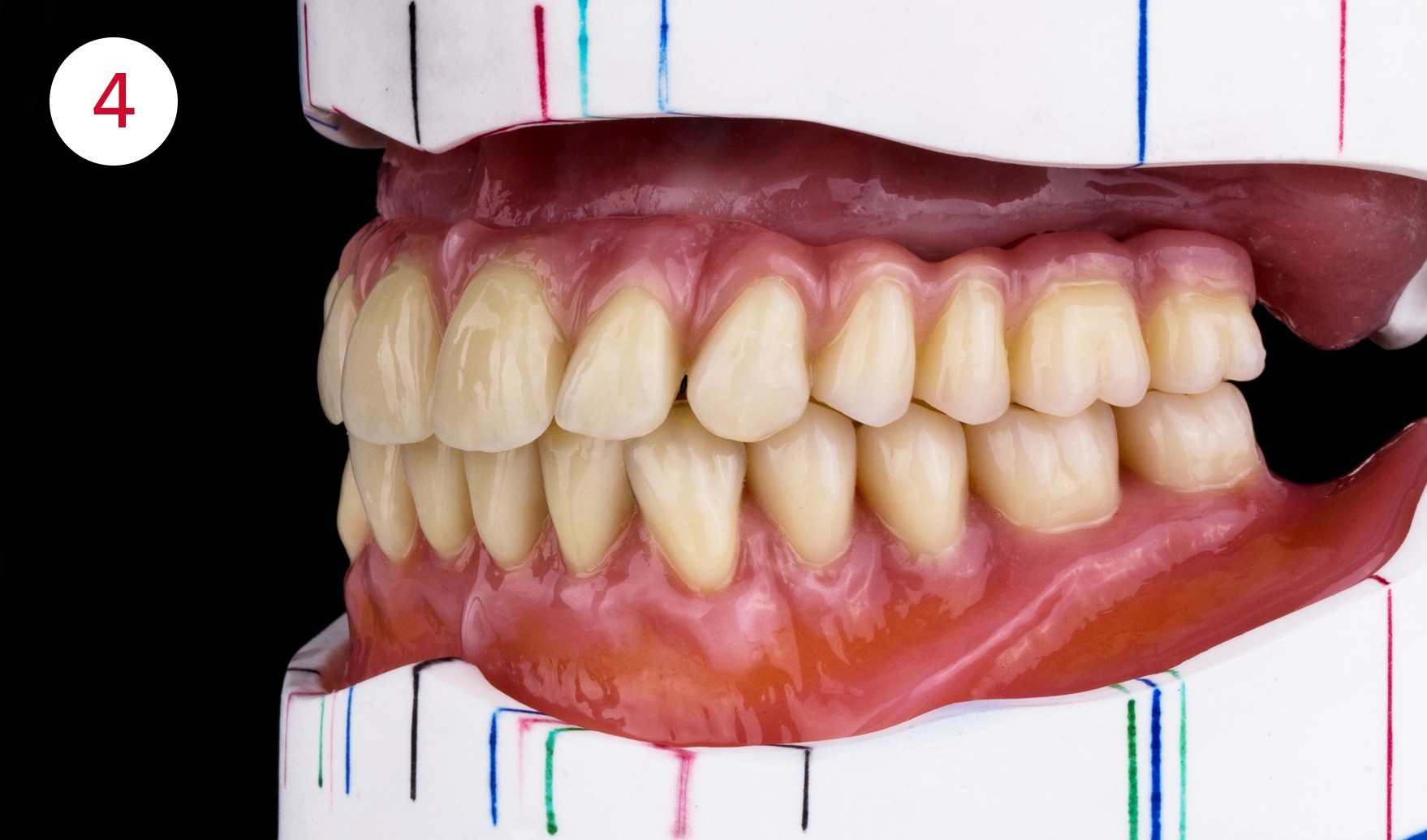
ABRASION-RESISTANT BECAUSE THE BITE HEIGHT IS FIXED
It is easy to write about good experiences and excellent reproducible results, even more so with mature techniques, materials, and semi-finished products for routine use. If quality and expertise are incorporated into the finished products, that is half the battle of working at a consistently high quality. This provides security for both client and the dental laboratory. The key word here is “security”: For implant-supported removable supraconstructions the replacement teeth have to “adhere” a great deal. Unlike natural teeth, implants have no receptors for neurological feedback about the occlusal pressure applied, which is why people wearing them often chew too hard. The material used here is crucial for success and my experience and the feedback from my customers confirm that this is the case for NFC+. This dental material is wear resistant.
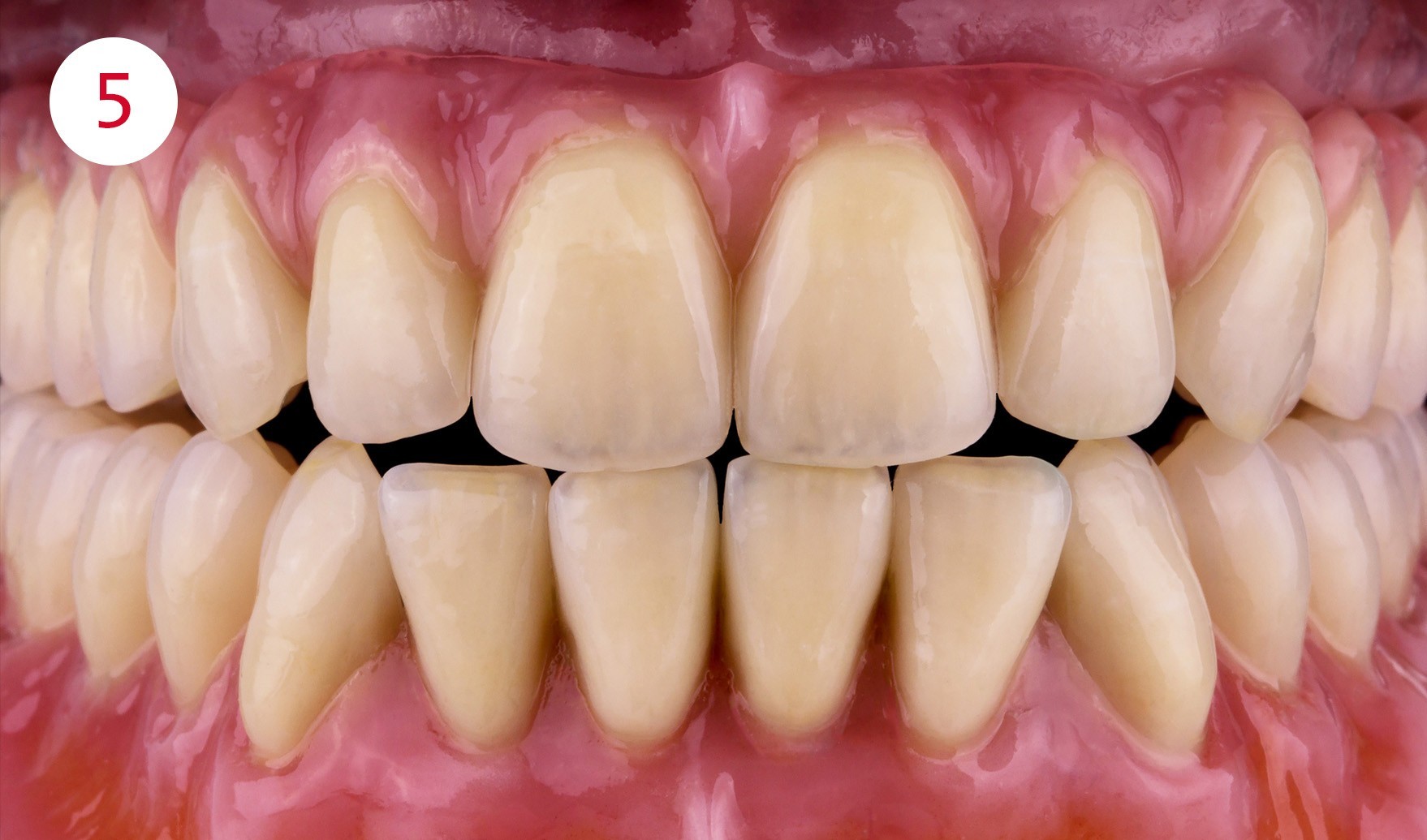

RED ESTHETICS: NATURAL APPEARANCE CREATED FROM THE INSIDE
Patients with hybrid denture restorations have had to endure a bit and would like to have a long-lived restoration and enamel that doesn’t chip. For this reason, I prefer to use intensive colors that are mixed into the denture base resin for staining dentures. This produces clean and outstanding craftsmanship and the effect is always produced from the inside. As a result of aging, enamel develops cracks and at some point it chips; everyone is aware of this but particularly the red esthetics must not be “brushed off” and bleached out over time. The PMMA-based AESTHETIC Intensive Colors make this possible because they are incorporated into the base resin during fabrication. This is more elaborate that applying stains but has excellent durability and is no longer something for patients to discuss with the dentist after a long period of wear.
Based on my experience, the following sequence is optimal for the coloring effect to be achieved from the inside: papillae, tooth roots, vestibular shield, labial frenulum and then just before finishing the fabrication, the base of the denture. I prefer shade 34 mixed with the AESTHETIC Intensive Colors yellow and white for the papillae and tooth roots. The characteristic marbling effect for the vestibular shield is best achieved if the resin dough is only lightly mixed with a spatula. Shade 34 and the intensive colors red,
brown, blue, and pink are mixed together.
Fig. 5+6: Coloring from the inside so that enamel does not chip
CRAFTSMANSHIP IS CRAFTING BY HAND
Analog and digital dental technology are not mutually exclusive. Digital procedures are automated fabrication processes that help us to work efficiently and with great precision, provided constructions and data sets are prepared with expert dental technology know-how. Expert dental technology know-how is technical expertise that we employ using analog and digital approaches, particularly also for producing work that I have described in various sections here. As a dental technician, I rely on products that facilitate our expertise and fabrication procedures. For “analog products” from dental technicians for dental technicians, this manufacturer is impressive for achieving outstanding results so that the imitation creates a naturally real illusion.
Fig. 7: Invisible third: the best advertisement for dentist and laboratory
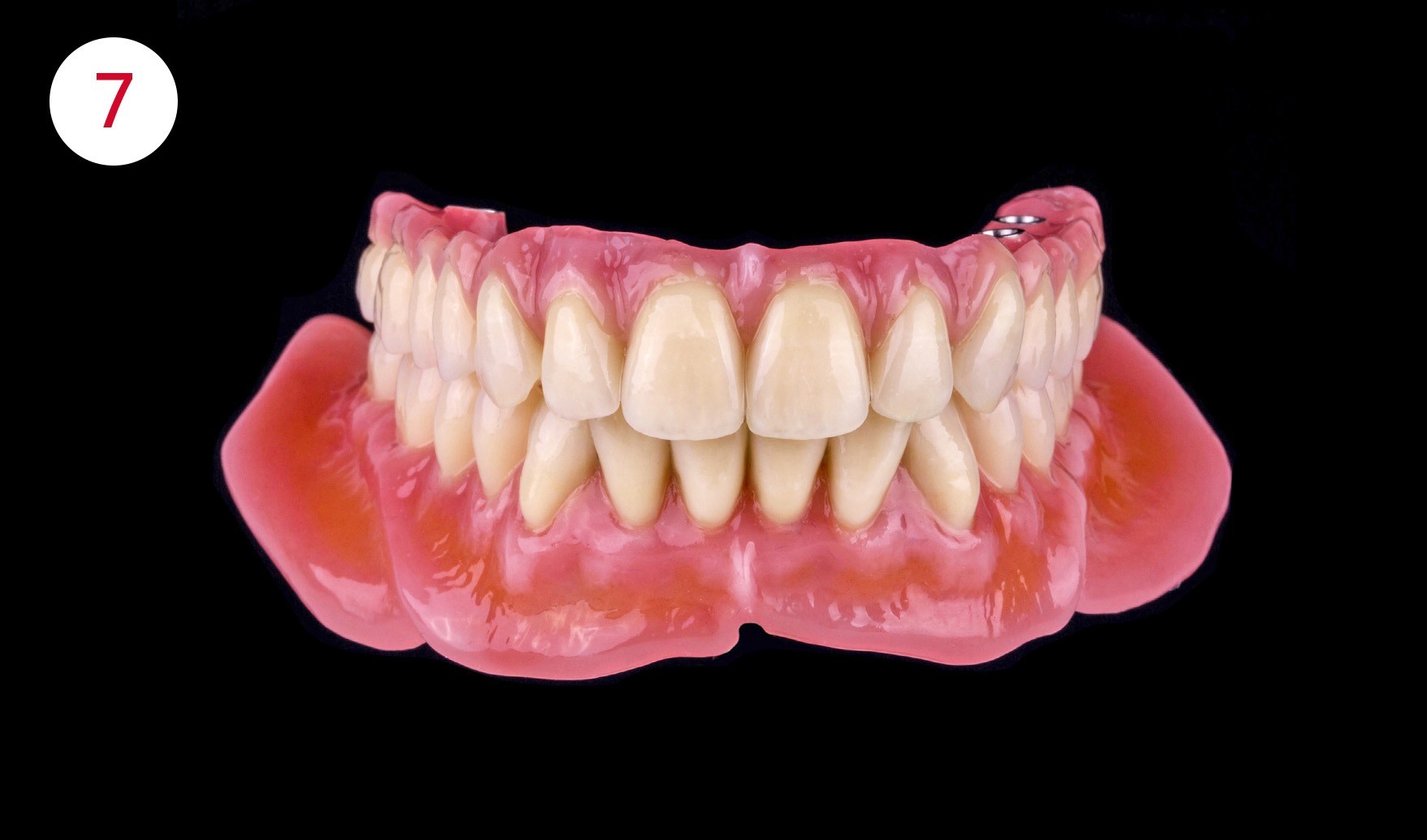
IMPORTANT / You can find the complete photographic material for this article in the PDF of the specialist articles, which can be downloaded below.
2010
Since 2010 he has worked together with MDT Michael Zirkler as a DGZI certified dental technical in Zirkler & Partner Zahntechnik
1998 – 2010
Employed in own laboratory in Athens focusing on implant prosthetics
1993 – 1998
Employed in the practice laboratories and commercial laboratories of Dr. Alexandros Tsiplikidis, Thomas Paul Zahntechnik, Dr. Ingo Brigmann in Berlin
1987 – 1993
Employed as an all-round technician in two laboratories in Athens
1985 – 1987
Dental technician training in Athens, Greece




